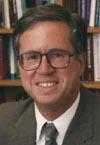Scientific Methodology
In
the 1950s, Carl Hempel offered what has become a widely-accepted description of
how theories are constructed and tested in the natural sciences, drawing on
arguments from the philosophy of science in the first half of this century. Compared to the simpler idea of direct
induction from data to theory as proposed by <!g>Bacon and Mill in the seventeenth
century (see Figure 1-A), Hempel portrayed scientific methodology in terms of a
“hypothetical-deductive” path. One
moves from data indirectly to the level of theory in a process which involves
imagination, analogy and models as well as logical inference. Then, as <!g>Karl Popper had shown earlier,
theories are then open to falsification against the data by the predictions one
deduces (see Figure 1-B). Compared to the simpler idea of direct
induction from data to theory as proposed by <!g>Bacon and Mill in the seventeenth
century (see Figure 1-A), Hempel portrayed scientific methodology in terms of a
“hypothetical-deductive” path. One
moves from data indirectly to the level of theory in a process which involves
imagination, analogy and models as well as logical inference. Then, as <!g>Karl Popper had shown earlier,
theories are then open to falsification against the data by the predictions one
deduces (see Figure 1-B).
In
the 1950s-60s, <!g>Thomas Kuhn, Norwood Hanson, Norwood Hanson, Stephen Toulmin, Stephen Toulmin, <!g>Imre Lakatos <!g>Imre Lakatos and others supplemented Hempel’s account in a broader view which stresses the
historical and contextual dimensions of scientific research. <!g>Barbour provides a particularly helpful
overview of their work (see Figure 1-C).
According to Barbour, these philosophers showed that <!g>metaphysical
concepts and assumptions pervade scientific theories and underlie scientific
methodology. Data are ‘theory-laden,’
and theories influence the decisions as to which data are relevant. The testing of scientific theories is
complicated, too, by the fact that ad hoc
auxiliary hypotheses can always be constructed to ward off potential
falsifiers. Networks of theories, and
not just isolated concepts or equations, are tested as a whole. Finally, the criteria for choosing between
rival theories goes far beyond predictive success to include coherence with
other, accepted theories, explanatory scope, fertility in suggesting new
domains for application, conceptual simplicity (“<!g>Occam’s Razor”), aesthetic
qualities like beauty, and the avoidance of ad
hoc moves. Since such criteria
transcend the details of the particular theories being considered, they provide
a framework for a rational choice between rivals. and others supplemented Hempel’s account in a broader view which stresses the
historical and contextual dimensions of scientific research. <!g>Barbour provides a particularly helpful
overview of their work (see Figure 1-C).
According to Barbour, these philosophers showed that <!g>metaphysical
concepts and assumptions pervade scientific theories and underlie scientific
methodology. Data are ‘theory-laden,’
and theories influence the decisions as to which data are relevant. The testing of scientific theories is
complicated, too, by the fact that ad hoc
auxiliary hypotheses can always be constructed to ward off potential
falsifiers. Networks of theories, and
not just isolated concepts or equations, are tested as a whole. Finally, the criteria for choosing between
rival theories goes far beyond predictive success to include coherence with
other, accepted theories, explanatory scope, fertility in suggesting new
domains for application, conceptual simplicity (“<!g>Occam’s Razor”), aesthetic
qualities like beauty, and the avoidance of ad
hoc moves. Since such criteria
transcend the details of the particular theories being considered, they provide
a framework for a rational choice between rivals.
|

A.
Induction (Bacon and Mill):

B. Hypothetical-Deductive method /
falsification (Carl Hempel, 1966; Karl Popper, 1932)

C.
Contextual and historical analysis (Kuhn, Hanson, Feyerabend, Toulmin,
Lakatos, 1960s)
|
Figure 1: Three versions of scientific methodology.
(adapted from Barbour, 1990)
Contributed by: <!g>Dr. Robert Russell
|








